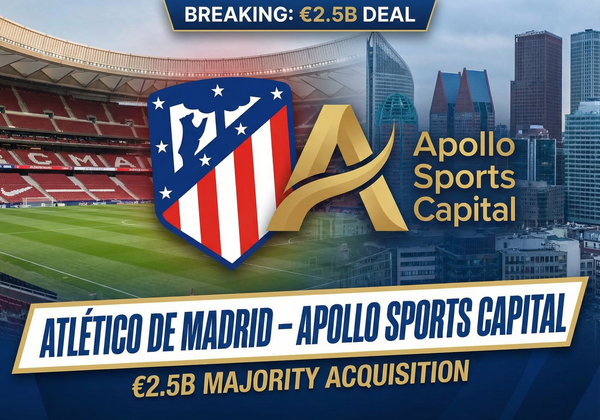Distribution Waterfall in Private Equity: How PE Profit Sharing Works
Once a portfolio company is sold for a profit, who gets paid first, and how much?
In private equity (PE), the distribution waterfall is the framework that dictates how profits flow between investors (Limited Partners) and fund managers (General Partners).
Understanding this structure is critical for grasping how PE firms generate returns and how incentives are aligned between GPs and LPs.
The Key Players in a Distribution Waterfall
- Limited Partners (LPs): The investors who commit capital to the PE fund. These can include pension funds, endowments, sovereign wealth funds, and high-net-worth individuals. LPs have limited liability - only up to their committed capital.
- General Partner (GP): The fund manager (the private equity firm). GPs source deals, manage portfolio companies, and oversee exits. Unlike LPs, GPs typically have unlimited liability.
What Is a Distribution Waterfall in Private Equity?
A distribution waterfall is the pre-defined sequence for allocating profits from a private equity fund’s investments.
It is usually embedded in the fund’s Limited Partnership Agreement (LPA) to ensure:
- LPs recoup their capital and earn a preferred return first.
- GPs receive performance-based payouts (carried interest) only after LPs are made whole.
This structure balances fairness with incentives, protecting LPs while rewarding GPs for strong performance.
The American Waterfall: A Deal-by-Deal Approach
The American distribution waterfall (deal-by-deal approach) allocates profits as each investment is exited. Here’s the typical four-step process:
- Return of Capital to LPs
LPs first receive 100% of their invested capital in that deal.- Example: If an LP invests $1M in a company sold for $1.5M, the first $1M goes back to the LP.
- Preferred Return (Hurdle Rate)
LPs then earn a minimum annual return (e.g., 8%) on their capital before GPs participate.- Example: On $1M invested, LPs receive $80,000 (8%) from profits.
- GP Catch-Up
GPs then receive 100% of distributions until they catch up to their agreed share of profits (commonly 20%).- Example: If LPs earned $80,000, the next $20,000 goes to GPs to reach their 20% share.
- Carried Interest Split (80/20)
After catch-up, profits are split 80% to LPs and 20% to GPs.- Example: On a $100,000 profit post-hurdle, LPs get $80,000; GPs get $20,000.
Putting It All Together
If a $1M LP investment grows to $2M upon exit:
- $1M → Returned to LPs
- $80,000 → Hurdle return to LPs
- $20,000 → Catch-up to GPs
- Remaining $900,000 → Split 80/20 → $720,000 to LPs, $180,000 to GPs
Final Outcome
- LPs: $1M (capital) + $800,000 profit
- GPs: $200,000 profit
The European Waterfall: Whole-Fund Model
The European distribution waterfall (whole-fund approach) delays GP payouts until all LP commitments plus preferred returns are repaid across the entire fund.
This model is more LP-friendly because:
- No carry is paid until the fund as a whole exceeds the hurdle rate.
- It reduces the risk of GPs earning carry on early wins while later deals underperform.
American vs. European Waterfall: Comparison
| Feature | American Waterfall (Deal-by-Deal) | European Waterfall (Whole-Fund) |
|---|---|---|
| Payout Timing | Per deal | After full fund meets hurdle |
| LP Risk | Higher (GP can earn early) | Lower (LPs fully protected) |
| GP Incentive | Strong, tied to quick wins | Aligned with long-term success |
| Complexity | Moderate | Higher (fund-wide calculations) |
Why the Distribution Waterfall Matters
- Incentivizes performance: GPs earn only after LPs are repaid.
- Protects investors: LPs’ capital and hurdle returns come first.
- Provides clarity & trust: Predefined LPA rules reduce disputes.
- Encourages discipline: GPs must focus on sustainable returns.
Key Private Equity Waterfall Terms
- Hurdle Rate: The minimum return LPs must earn (e.g., 8%) before GPs get carry.
- Catch-Up: The mechanism allowing GPs to quickly reach their profit share post-hurdle.
- Carried Interest: The GP’s share of profits (typically 20%), serving as their performance fee.
- Management Fee: Annual fee (1–2% of assets) to cover GP operating costs.
Clawbacks and Hurdles
- Clawback Provisions: Require GPs to return excess carried interest if later deals underperform or LPs don’t achieve their overall preferred return.
- Deal-by-Deal vs. Fund-Level Hurdles:American waterfall → GPs can earn carry earlier on individual deals.European waterfall → GPs only earn after the entire fund clears the hurdle.
FAQs on Distribution Waterfalls in Private Equity
Q: What is a distribution waterfall in private equity?
A: A distribution waterfall is the profit-sharing framework that determines how returns are split between LPs and GPs in a PE fund.
Q: What is the difference between American and European waterfalls?
A: The American model pays GPs deal-by-deal once hurdles are cleared, while the European model requires the entire fund to meet return thresholds before carry is paid.
Q: What is carried interest in private equity?
A: Carried interest is the GP’s share of profits, usually 20%, which serves as their main performance incentive.
Q: Why are hurdle rates important?
A: They ensure LPs receive a minimum return before GPs can participate in profit sharing.
The Bottom Line
The distribution waterfall is the backbone of private equity profit sharing.
By prioritizing LPs while rewarding GPs for performance, it strikes a balance between investor protection and incentivizing fund managers.
Whether deal-by-deal (American) or fund-wide (European), understanding the mechanics of the distribution waterfall is essential for anyone involved in private equity.



